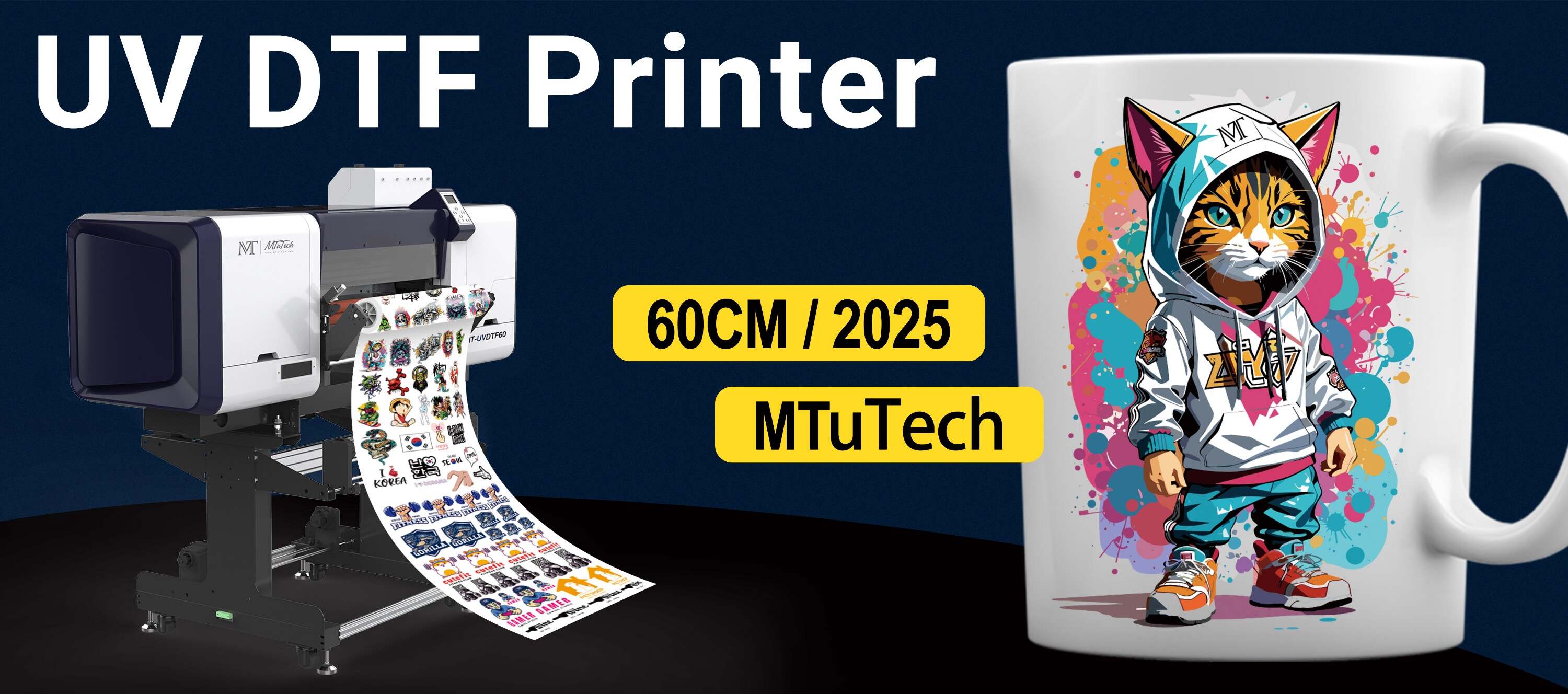Introduction
In today’s fast-paced printing industry, the evolution of printing technology has led to significant advancements that enhance efficiency, quality, and creativity. Among these advancements, the commercial UV DTF (Direct-to-Film) printer stands out as a versatile and powerful tool for businesses looking to expand their print offerings. This guide will delve into what a commercial UV DTF printer is, its benefits, key features, and its impact on the printing world.
What is a UV DTF Printer?
A UV DTF printer combines the best aspects of UV printing and direct-to-film technology. It utilizes UV light to cure the ink as it is printed on the transfer film, allowing for vibrant colors and durable prints. This printer can reproduce intricate designs and text on various surfaces, making it a favorite among businesses that require high-quality prints for custom items.
Benefits of Commercial UV DTF Printers
Choosing a commercial UV DTF printer offers several advantages, making it an attractive option for businesses of all sizes. Here are some of the most significant benefits:
High-Quality Prints: UV DTF printers deliver exceptional image quality with vibrant colors and sharp details, ensuring that your prints stand out.
Versatility: These printers can print on a wide range of materials, including fabrics, plastics, metals, and more, making them ideal for various applications.
Durability: UV-cured inks are resistant to fading, scratching, and water, ensuring that prints maintain their quality over time.
Quick Turnaround: The printing process is fast, allowing for a quick turnaround time, which is essential for businesses with tight deadlines.
Eco-Friendly Options: Many UV DTF printers use environmentally friendly inks that reduce harmful emissions while providing high-quality output.
Key Features of Commercial UV DTF Printers
When selecting a commercial UV DTF printer, it’s essential to understand the key features that differentiate models from one another. Here are some critical features to consider:
Ink Technology
One of the most important aspects of a UV DTF printer is its ink technology. Most commercial UV DTF printers utilize high-quality UV inks that provide vibrant colors and exceptional durability.
Print Head Technology
The print head technology used in the UV DTF printer can significantly affect print quality and speed. Advanced print heads can deliver finer details and higher resolutions, resulting in superior prints.
Print Size and Capacity
Different printers support varying print sizes and capacities. Businesses should choose a printer that accommodates their typical print sizes and the volume of work they expect.
User-Friendly Interface
A user-friendly interface allows operators to navigate the printer's settings and features easily. Look for printers with intuitive controls and software that enhance user experience.
Maintenance and Support
Choose a brand that offers extensive support and maintenance services. Regular maintenance ensures the printer operates efficiently and extends its lifespan.
Applications of UV DTF Printing
Commercial UV DTF printers have numerous applications across various industries. Some popular uses include:
Apparel Customization: Create custom designs for t-shirts, hoodies, and other clothing items.
Promotional Merchandise: Print logos or unique designs on promotional items like mugs, pens, and bags.
Signage: Produce eye-catching signs and banners for businesses or events.
Home Decor: Print customized designs on home decor items such as cushions or wall art.
Choosing the Right Commercial UV DTF Printer
Selecting the right UV DTF printer is crucial for meeting your printing needs effectively. Here are some factors to consider when making your decision:
Volume of Work
Assess your expected printing volume. If you need high throughput, opt for a printer designed for high-volume tasks.
Budget
UV DTF printers come with varying price tags. Establish a budget that aligns with your business goals and allows for additional costs such as maintenance and supplies.
Brand Reputation
Research different brands and their reputation in the market. A well-established brand often indicates reliability and quality.
Warranty and Service
Look for printers that come with a robust warranty and access to customer support. This can save you time and money in case of malfunctions.
Conclusion
Commercial UV DTF printers are a game-changer in the printing industry, offering businesses the flexibility and quality needed to thrive in a competitive market. Their ability to produce high-quality, durable prints on various materials makes them an essential tool for any business looking to expand their printing capabilities. As technology continues to evolve, investing in a UV DTF printer could be a smart move for your company. If you’re interested in elevating your printing business, explore our high-quality UV-DTF printers here.
FAQ
What are the main advantages of UV DTF printing over traditional methods?
UV DTF printing offers several benefits over traditional methods, including better image quality, faster drying times, and the ability to print on a wider variety of materials. Additionally, UV inks are more durable and resistant to fading and damage.
Can UV DTF printers print on fabrics?
Yes, UV DTF printers are capable of printing on various fabrics, enabling customization of clothing and textile products. This feature is especially beneficial for businesses focused on apparel decoration.
What maintenance does a UV DTF printer require?
UV DTF printers require regular maintenance, including cleaning print heads, checking ink levels, and ensuring proper calibration. Routine maintenance helps prevent issues and extends the life of the printer.
Are UV DTF prints environmentally friendly?
Many UV DTF printers utilize eco-friendly inks that produce lower emissions compared to other printing methods. It’s essential to choose a printer that prioritizes sustainability if this is a concern for your business.
How do I choose the right UV DTF printer for my business?
Consider your specific needs, including print volume, desired print quality, and budget. Research different models, brands, and customer feedback to make an informed decision that aligns with your business goals.

